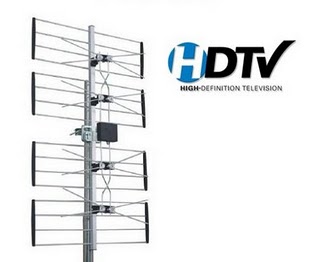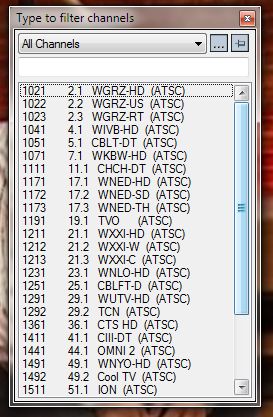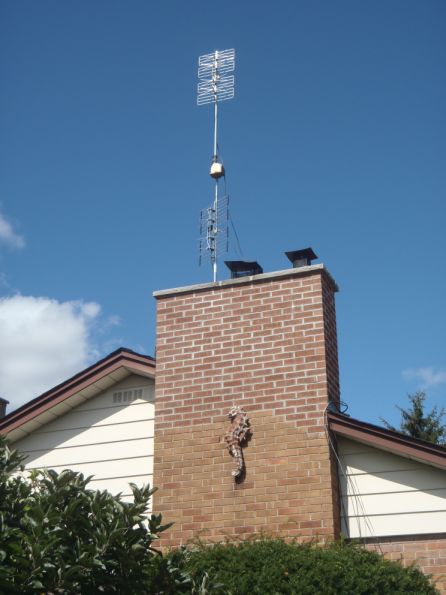Now that the United States and Canada have moved to 100% total digital broadcasts for TV signals, it’s time to save yourself some money. Sure, cable and satellite can offer you hundreds of channels but honestly, how many do you watch? Unless your kids are addicted to Mythbusters or you’re a total sports fanatic, here’s how you can watch broadcast television for free.
Every TV sold these days has an ATSC tuner. All that this means is that you can stick a cheap antenna on your wall or roof and watch TV. With a basic UHF bowtie, the kind that used to sit on the rabbit ears with a little clip, you can receive stations that are close to you. With a bit more work, and a very basic and cheap antenna, you will be able to receive stations that might be up to 100 miles away. Here’s an antenna that will set you back $14.99 here in Toronto:

This small unit, pointed almost due south, picks up more than 30 stations, some as far away as about 90 miles. If you know the Toronto area, you’ll know that we’re on the border with Lake Ontario between us an Buffalo. While the channels come and go, depending on a few weather variables, I can always get CBS, ABC, FOX, NBC, CTS, CBC, CTV, PBS as well as many independent stations. I can even receive stations from Rochester, a full 94 miles away. Here’s a snapshot of part of my channel list:

To get started, check out this link and find out how many stations you might be able to receive. TVFool has everything you’d ever need to find stations, aim your antenna and calculate distances to the respective towers. Enter your postal code or zip code and a visual will be created for you. Here’s mine :

Unless you live in the boonies, you should be able to receive a decent number of channels. The tuners on modern LCD or Plasma TV sets are pretty damn good for the price. The best part about digital signals is that you pretty much get them or you don’t. There are no waves or double images which plagued analog reception in the past. In a real heavy rainstorm I sometimes lose the Buffalo channels outright or they will be pixelated. Even then, they pop back in again frequently. Here is a photo of my antenna setup:

I used an approximate height of 35 feet on TVFool to find the stations or channels in my area. I think it’s a bit less than that, actually.
If you’re not a real handy person, you don’t even need to get up on the roof to set these things up. A small antenna against a window that faces the station you want will suffice, as long as the transmitting tower isn’t ridiculously far away. On my Hauppauge tuner in this computer, I have had perfectly clear signals with an old bowtie antenna right here in my basement office, believe it or not.
With this setup, you won’t get ESPN or HBO or any of the full cable channels. However, depending on where you are, you might get some channels that aren’t available on cable, I get several, so there is a definite yin and yang to this. The point is that you also won’t be paying through the nose for compressed HD channels. All of the stations that I get are in full, glorious HD, transmitting the full signal not the compressed signal that you get with cable. The difference is startling. A side-by-side comparison of cable signal compared to an OTA signal might shock you. With cable, you’re really paying for something you’re not getting.
One last tip, use RG6 for your antenna to TV tuner connections. Don’t use RG59. Make sure your connections are solid and you’re on your way to TV freedom. Let me know if you have any questions.
Thanks for reading!
